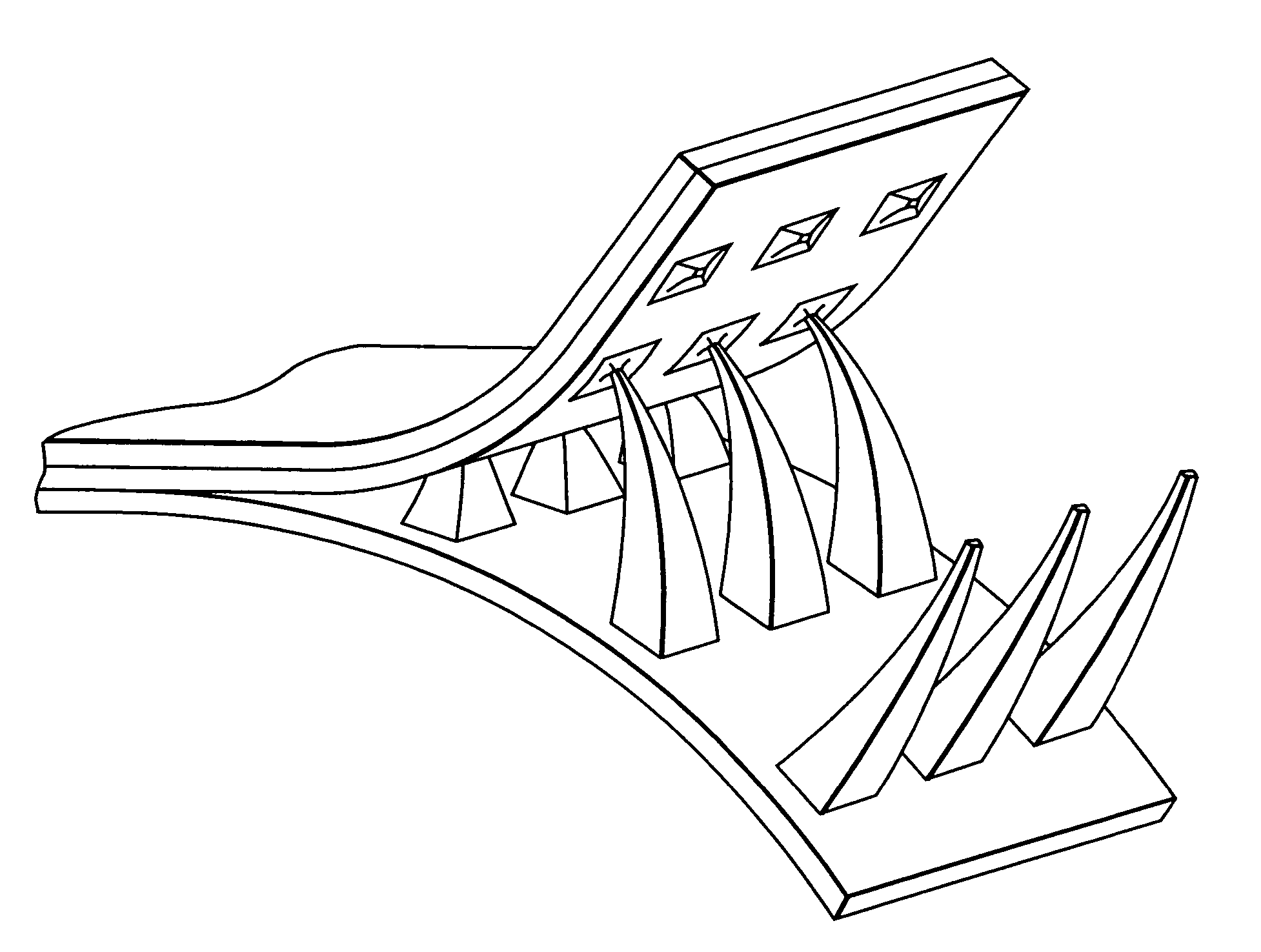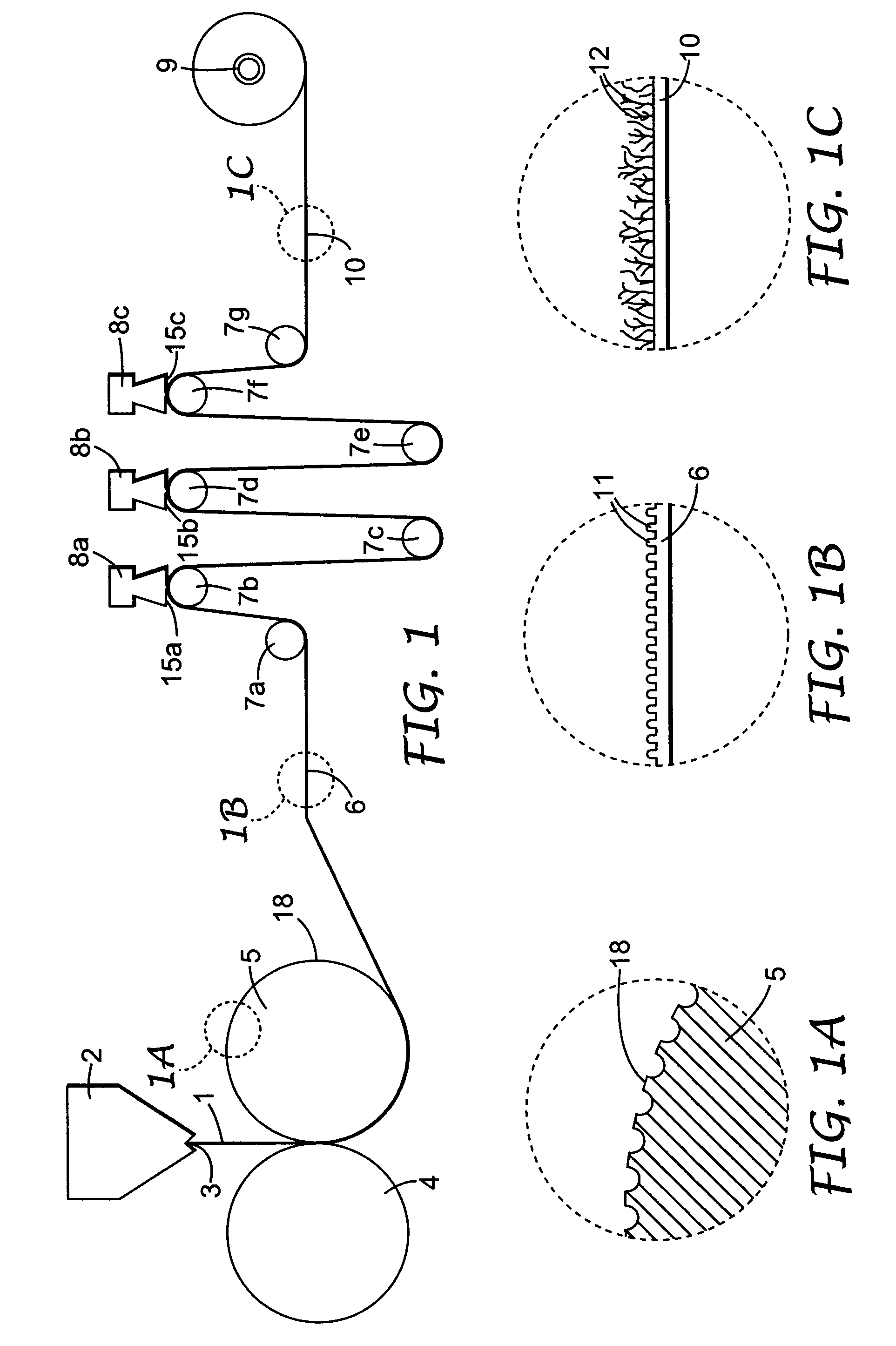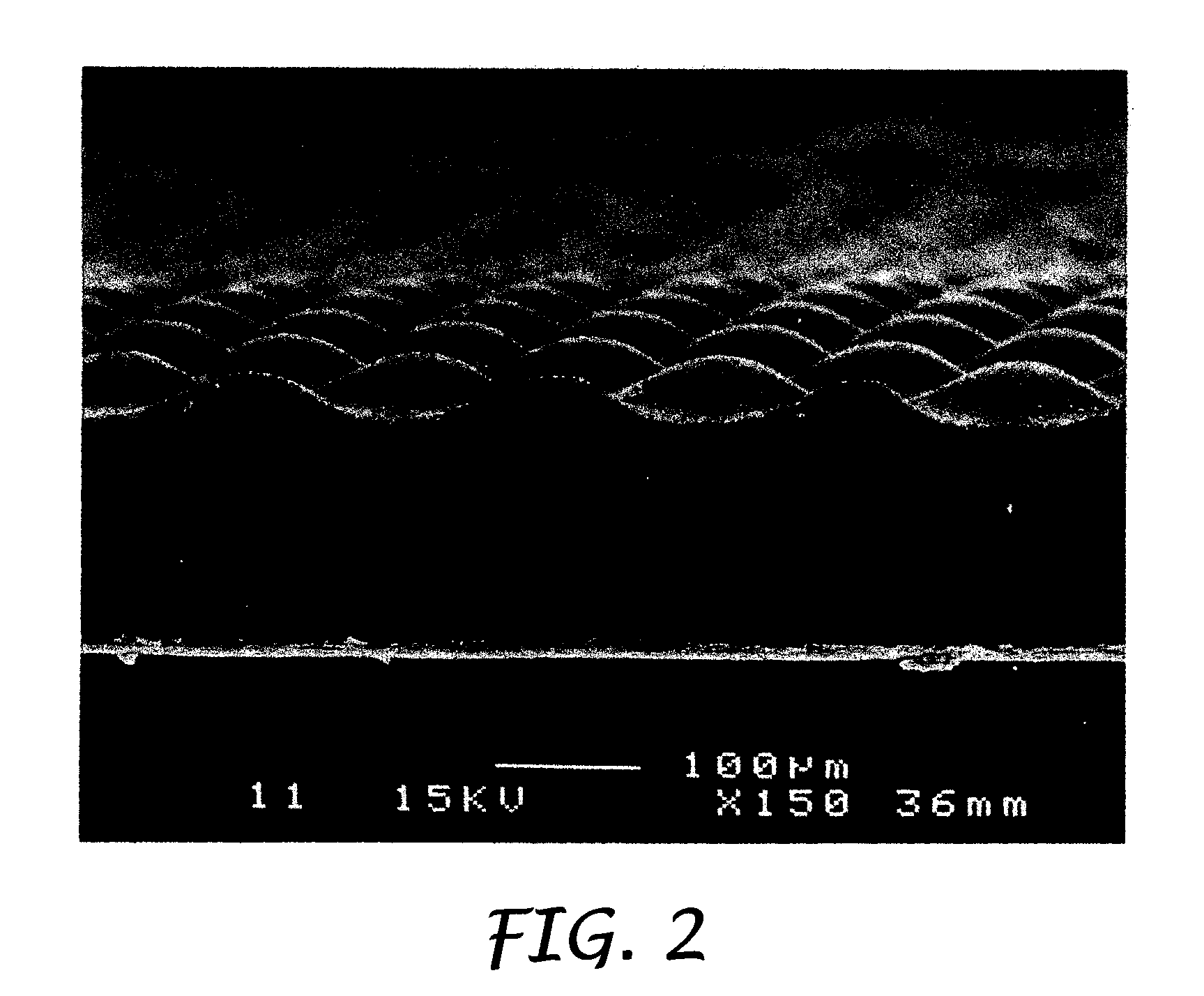Methods for making microstructured polymer substrates
- Summary
- Abstract
- Description
- Claims
- Application Information
AI Technical Summary
Benefits of technology
Problems solved by technology
Method used
Image
Examples
example 1
[0065]A 0.16 mm thick film of linear low density polyethylene (available from CT Films, Chippewa, Wis. under the designation X0–52; XEM 352.1) was structured on one side with features that were square at their base or intersection with the film and raised to a rounded top; the square base was about 75 μm on a side and the height was about 30 μm. The placement of the features formed a square lattice array about 0.12 mm on a side (see FIG. 2). The structured side of this film was treated with a random orbit palm sander (DeWalt Model DW 421) using 80 grit coated abrasive (80A NO-FIL ADALOX A273 available from Norton, Troy, N.Y.). Moderate hand pressure was used on the sander as it was slowly moved back and forth in a reciprocating motion in one direction for about 15 sec and then back and forth in a second direction perpendicular to the first for another 15 sec. A section was cut from the center of this sample and examined with a scanning electron microscope. Fibers with frayed tips we...
example 2
[0066]The XEM 352.1 low density polyethylene was treated as described Example 1 except that a 180 grit coated abrasive was used (P180 255L PRODUCTION RESIN BONDED FRE-CUT FILM OPEN COAT, 3M, St. Paul, Minn.). An electron micrograph of material prepared as per this example is shown in FIG. 4. The fibers formed predominately at the raised features, had lengths up to about 250 μm, were frayed at the ends and were smaller in cross section than fibers formed with the coarser grit in Example 1.
example 3
[0067]The XEM 352.1 low density polyethylene was treated as described Example 1 except that a 400 grit coated abrasive was used (P400 SG3 PRODUCTION RESIN BONDED FRE-CUT FILM OPEN COAT, 3M, St. Paul, Minn.). An electron micrograph of material prepared as per this example is shown in FIG. 5. The fibers formed at the raised features, had lengths up to about 100 μm, were frayed at the ends and were smaller in cross section than fibers formed with the coarser grits in Examples 1 and 2.
PUM
| Property | Measurement | Unit |
|---|---|---|
| Length | aaaaa | aaaaa |
| Length | aaaaa | aaaaa |
| Fraction | aaaaa | aaaaa |
Abstract
Description
Claims
Application Information
 Login to view more
Login to view more - R&D Engineer
- R&D Manager
- IP Professional
- Industry Leading Data Capabilities
- Powerful AI technology
- Patent DNA Extraction
Browse by: Latest US Patents, China's latest patents, Technical Efficacy Thesaurus, Application Domain, Technology Topic.
© 2024 PatSnap. All rights reserved.Legal|Privacy policy|Modern Slavery Act Transparency Statement|Sitemap



